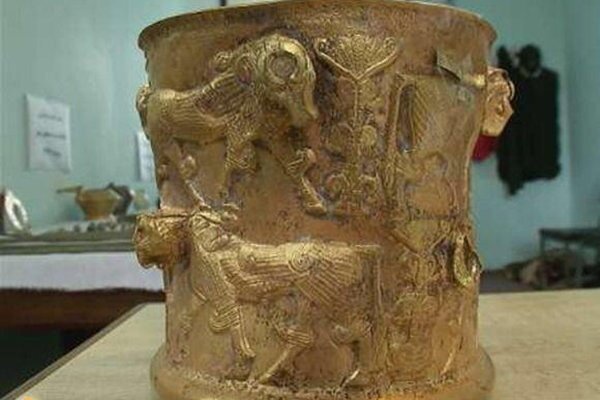Millennia-old gold bowl to go on display in Meshkinshahr

TEHRAN – A 3000-year-old gold bowl, which was discovered from illegal diggers almost seven years ago in a village near Meshkinshahr, the northwestern province of Ardebil, will go on display during the next Iranian calendar year 1400 (starts on March 20, 2021).
The gold bowl is planned to be shown in the city’s museum, which is currently under construction and is scheduled to be ready by the yearend, the provincial tourism chief has announced.
The bowl, which dates back to the 1st millennium BC, represents the ancient civilization of the area, Nader Fallahi said on Tuesday.
Known as the Meshkinshahr Gold Bowl, the historical object with 12 centimeters height and its embossed designs has attracted the attention of archaeologists in terms of size, pattern, and historical antiquity.
It also can prove the claim of the existence of an ancient civilization in the Meshkinshahr area, which is known as the land of ancient castles.
Two rows of moving cows are on the bowl. In each row, four cows are shown with embossed heads and without decoration. In the bottom of the bowl, a geometric rosette flower and a sun can be seen.
Meshkinshahr embraces several historical sites including the Old Castle, the ancient city of Yeri, and Qahqaheh castle.
Being near the high Mount Sabalan, it enjoys a moderate mountainous climate and the Sabalan summit can be seen in the south of the city with an eye-catching scenery.
The antiquity of the city dates back to the early centuries of Islam but in the Safavid era, it was thriving even more. The city is well known for its rugs and its mineral springs.
Meshkinshahr suspension bridge with 345 meters long, 3 meters wide, and 80 meters high, which was inaugurated in 2015 and is said to be the largest of its kind in West Asia, is also one of the top tourist destinations of the city.
ABU/MG
Leave a Comment